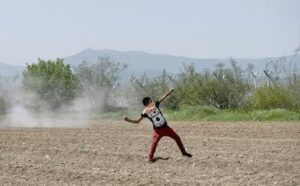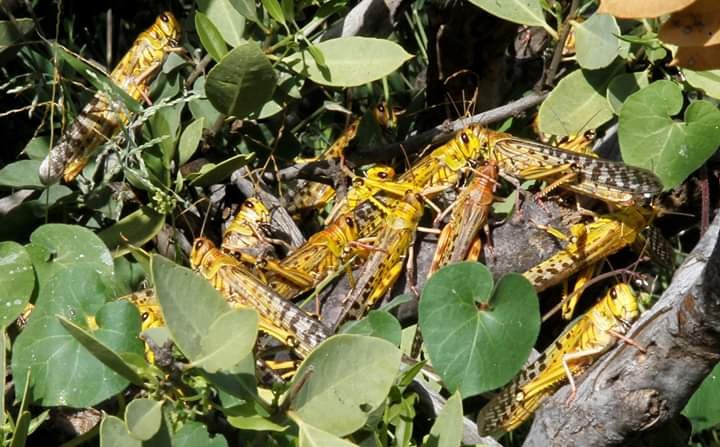The Ministry of Agriculture, Animal Industry and Fisheries has dismissed claims that desert locusts have invaded parts of Kitgum District.
Last week, the New Vision newspaper reported that locusts Oromo Sub-county, Kitgum district and destroyed green vegetation and food crops like maize, and other wild plants on an estimated 200 square metres in Lolwa Parish.
However, speaking during a press briefing in Kampala, the minister of state for agriculture, Fred Bwino Kyakulaga clarified that a team of agricultural experts was dispatched to the area to assess the situation and collect samples of the insects.
“Claims that there are desert locusts in Oromo, Kitgum district are false. I want to assure the public that the insects seen in Oromo, are not desert locusts,” said minister Kyakulaga. “The samples collected were analyzed, and we found that these insects, although they belong to the same family as desert locusts, are actually grasshoppers.”

Although the ministry explained that while these grasshoppers also feed on vegetation and may appear similar to locusts, they do not possess the destructive migratory behavior associated with desert locusts.
Desert locusts are known to originate from regions surrounding the Red Sea, particularly in countries like Sudan, Eritrea, and Yemen, before swarming into East Africa during certain seasons.
“We have contacted the Desert Locust Control Organization for Eastern Africa to confirm if there are any swarm movements from traditional breeding grounds. As of now, there is no indication of such activity,” the minister added.
Despite ruling out an immediate threat, the Ministry of Agriculture assured the public that the government remains vigilant and well-prepared in the fight against desert locust invasions.
“Preparedness remains a priority. We have surveillance and response teams on standby, and we will continue to monitor the regional situation closely,” the official said.
Uganda last experienced locusts invasion in 2020, the first after over 60 years, when a swarm of locusts entered the country through Kenya causing widespread damages to crops and green pasture in Karamoja, Teso, Lango and Acholi sub-regions.
The ministry urges the public to remain calm and rely on verified information from authorities rather than speculation.








































